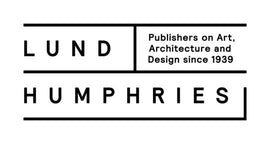Spotlight on Collections: Kettle’s Yard, Cambridge
Ever since the idea of writing a blog post about Kettle’s Yard was mooted, I knew I would struggle to find a way of describing this very special place in Cambridge without detracting from the sense of surprise and delight the first-time visitor is bound to feel as she or he discovers it.
One option is to stick to historical facts – to recount the institution’s fascinating evolution from the home, in the 1950s and 1960s, of Jim Ede, a former Tate curator, into the bipartite gallery of Modern and contemporary art it is today. When Ede moved to Cambridge, he brought with him an already impressive collection of works by modern European artists, including Ben and Winifred Nicholson, Christopher Wood, Joan Miró and Constantin Brancusi. The works’ creators were friends and acquaintances of Ede, and as he and his wife, Helen, established themselves at Kettle’s Yard, they continued to acquire pieces in a range of media and styles. The collection was donated to the University of Cambridge in 1963, along with the building which houses it. In 1970, three years before the Edes left Kettle’s Yard for Edinburgh, they commissioned an extension from Sir Leslie Martin and his partner David Owers in order to have more room for displaying work and hosting events. A further extension was completed in 1994, where a bookshop and contemporary art gallery now operate, and an ambitious plan to create an education wing, a cafe and additional gallery space is currently underway, with an anticipated completion date of 2016.
A second way of discussing Kettle’s Yard without revealing its secrets is, to use a photographic metaphor, to bypass the panorama in favour of a close-up; to eschew an account of the permanent collection’s unique and beautiful installation in favour of a look at some of its contents. Ede was one of Alfred Wallis’s most fervent champions. The fisherman-turned-painter’s capacity to convey a deeply personal vision of the Cornish landscape, in works such as Brigantine Sailing past Green Fields (n.d.) and Land, Fish, and Motor Vessel (1932-7), appealed to the curator’s life-long urge to seek out aesthetic experiences from sources that, at the time, were unconventional. Likewise, Ede was drawn to Elisabeth Vellacott’s drawings and ink-wash paintings, for example, Chesil Beach (1952), where imaginative takes on traditional themes are married with a strikingly original style. Ede’s ability to spot great work by artists that were, and in some cases remain, lesser-known, is what makes the collection at Kettle’s Yard (which also features heavyweights like Barbara Hepworth, Henry Moore and Henri Gaudier-Brzeska) quite so sui generis.
If you can’t visit Kettle’s Yard in person, then you should visit its vast and well-maintained website. If you are planning a visit, however, don’t be tempted to take even a sneak peek, lest it spoil what doubtless remains one of Cambridge’s most enticing attractions.
Celia Dunne, Publishing Assistant
Kettle’s Yard, Castle Street, Cambridge CB3 0AQ
House open Tuesday to Sunday, 2-4pm; Bookshop and Gallery open Tuesday to Sunday, 11.30am-5pm
Admission free
01223 748100
mail@kettlesyard.cam.ac.uk

